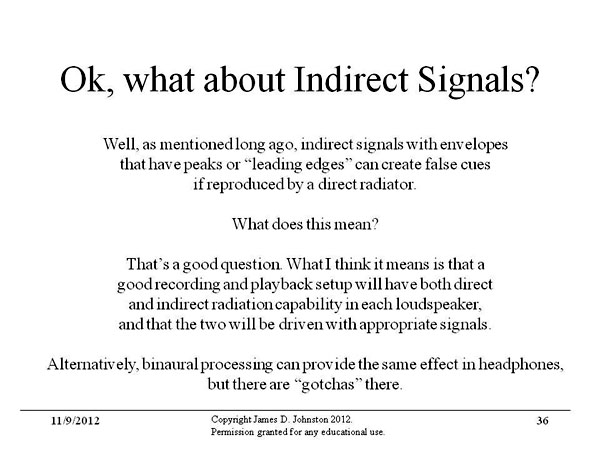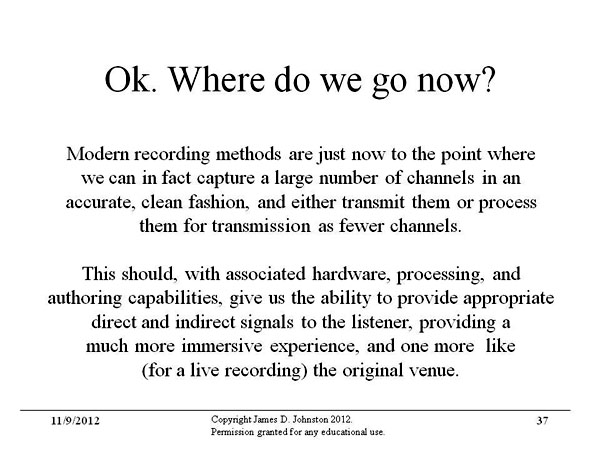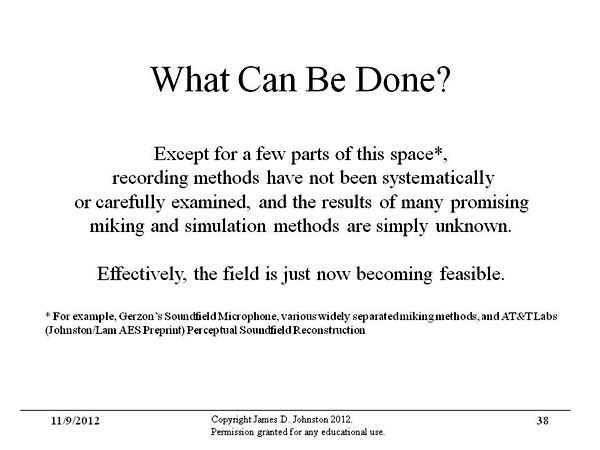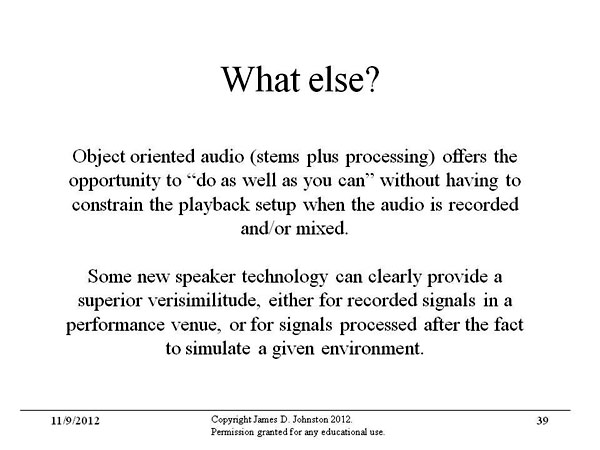| |
--- Recording
& Rendering 101 --- Acoustics vs. Hearing
--- Subjective evaluation ---
--- Room
optimized stereo --- Sound reproduction ---
Recording
what we hear ---
--- Experimental results
--- Theory --- SRA
--- Sound field
control ---
Soundfields:
Acoustics vs. Human Hearing
Here are slides from a seminar about
acoustics and the perception of sound. This subject matter should be of great
interest to recording engineers and loudspeaker designers alike. Both have a lot
to learn about soundfields, how to sample them and how to render the recorded
acoustic scene in a reverberant environment. The science of this is not yet
complete, but what is known should be taken into account in order to improve the
art. James
Johnston (JJ) gave me permission to post his slides.
As I grapple with the sound transmission from
loudspeaker to listener, with the influence from a reverberant room and how the
brain will try to detect essential cues in the multiplicity of sound streams
reaching the eardrums, I come to the following conclusions based upon
observations and what I read:
-
The on-axis free-field response must be
perceptually dominant over the room response and it must be perceptually
appropriately shaped for the intended angle of sound incidence, i. e
differently for the Center speaker from Left or Right speakers and
Surrounds.
-
The Modulation Transfer Functions between
loudspeakers and listener must be minimally degraded by the presence of the
room. Most of the information for the brain is carried in the ever changing
envelope of the signal, not in its steady-state behavior. A Modulation
Transfer Function can of course be calculated from the impulse response, but
the perceptually significant modulation rate should be investigated first.
-
The first lateral reflections should not
be intentionally diffused or absorbed, but delayed by at least 6 ms. They
are characteristics of the room. The reflections should be symmetrical in
order not pull the phantom stereo scene to one side.
-
The sound spectrum radiated towards the
first reflection area should be identical to the on-axis, free-field
spectrum and only differ in amplitude. This requires a loudspeaker with
frequency independent response over a wide emission angle.
-
Floor and ceiling reflections are
primarily associated with the perception of elevation of the acoustic source
and with distance from it. These type of reflections are experienced
everyday and understood by the brain since childhood as belonging to the
environment. The reflections have minor influence upon the rendered phantom
scene, but contribute to the reverberant field in the room.
-
The power response of the loudspeaker
should be frequency independent so that the reverberant field has the same
timbre as the direct sound.
-
The direct sound at the listening
position should be less than 6 dB below the reverberant sound above the
Schroeder frequency.
-
The wall behind the loudspeakers should
be diffusive and the wall behind the listener should be absorptive or open
for minimal reflection.







































******************************************************************************
|